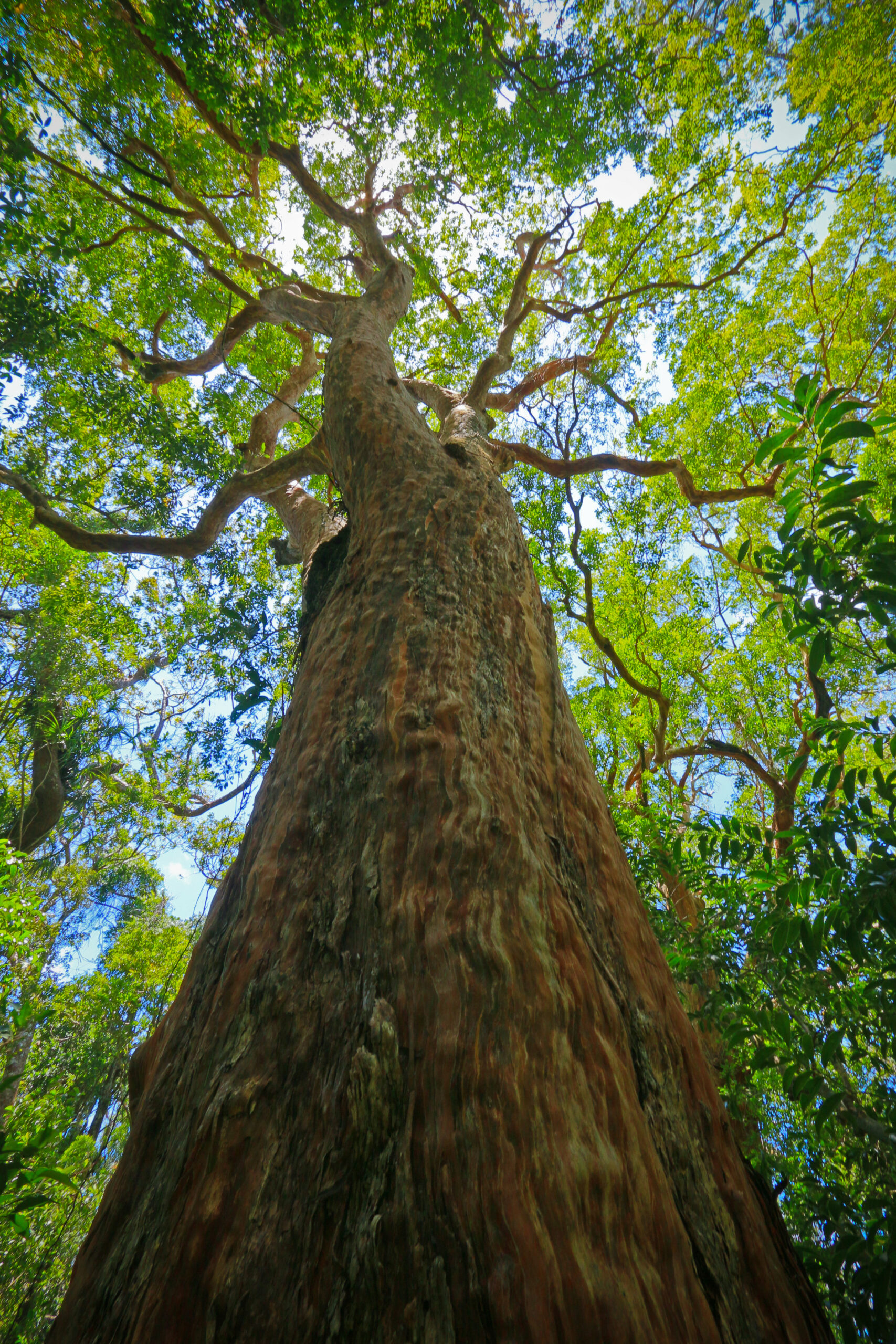| Local Name | Place |
| Ipil-ilog, Ipil-talau | Mindoro |
| Labrig | Quezon |
| Tagal, Tugas | Palawan |

Did you spot something we need to update?
Do let us know. Together, let's grow the database.
Reach out to us at binhi@energy.com.ph
ASSOCIATED VEGETATION: Limestone forest with leguminous trees like Afzelia rhomboidea, Sindora supa, Instsia bijuga, Albizia acle, Wallaceodendron celebicum, Pterocarpus indicus, Kingiodendron alternifolium, Vitex parviflora, Pterocybium tinctorium, Ziziphus talanai, Toona calantas, Mimusops elengi, Maranthes corymbosa, Wrigthia pubescens ssp. laniti, Lagerstroemia piriformis, Heritiera sylvatica, Pterospermum diversifolium and Mallotus floribundus (Fernando et al., 2008).
Usually along the seashore, edge of rivers (including tidal), back of mangroves, in some localities occurring in inland forests, both primary and secondary.
NURSERY PHASE This species is normally propagated by seeds, and seedlings/wildlings (Thaman et al., 2006). SEED COLLECTION: Healthy and good-formed trees should be selected for seed collection. Pods are collected from the top of the tree or also fallen pods on the ground. Seeds from the pods are removed immediately and protected from decay. SEED TREATMENT: After collection, seeds are spread-out on a hard surface for air-drying for a period of about one week. Before sowing, the seeds are wrapped in cotton cloth is dip in hot water for about five minutes. These are allowed to cool overnight. Another method is to file or nick through the outer seed coat (scarification) on the edge of the seed opposite the hilum (the small mark on the edge of the seed where it was once attached to the seed pod). A small triangular file works well but even more efficient is a large nail clipper. A shallow nick just through the outer surface suffices. After nicking, the seeds are soaked in cool water for 24 hours to ensure the seeds swell with water (Thaman et al., 2006). SEED GERMINATION: Pods of I. bijuga are sown 3 centimeters deep, in drills 15 centimeters apart, with a distance of 4 centimeters between the pods. When sowing seeds the edge with the hilum should be down to ensure that the seed coat is shed as the growing shoot emerges. A light of 76% is recommended (Thaman et al., 2006). Potting: Sterilized garden soil is recommended for potting. As this species produces a very long tap root, a larger plastic bag is used for potting to induce production of more lateral roots. Root trainers accordingly are better (Thaman et al., 2006) which will allow air-pruning thus producing ramified root system. After potting, the seedlings are placed under a partially shaded place until its robust enough for planting in the field. PEST AND DISEASES: A fungus (Sclerotium sp.) was observed attacking the cotyledons and young plants of I. bijuga in experimental flats in the Makiling National Park. OUTPLANTING: Seedlings grow quickly and are ready for outplanting in about 12 weeks. An average height of 25-40 cm (10-16 in) is recommended for outplanting. The stem should have become woody at the base and have a diameter of 10-15 mm (0.4-0.6 in). A strong, short stem is better for outplanting than a tall, weak stem (Thaman et al., 2006). PLANTATION SPACE SPACING: In undulating terrain where the possibility of soil erosion is not severe, the recommended spacing is 2 m x 2 m. Other spacing recommendations have been made - 3 x 4 m and 5 x 5 m (10 x 13 ft and 16 x 16 ft) (Soerianegara et al., 1994). A stake is used as marker on this spot to serve as guide for the planters where to plant the seedlings. A hole is dug bigger and wider than the base of the seedling. Contour planting should be done in hilly and mountainous areas where soil erodibility is high. Spacing is 2 m along contour and 3 m between contours, which start from uphill going downhill. APPLICATION OF FERTILIZER: If phosphorus is a limiting macronutrient, fertilization with super-phosphate or rock phosphate is often necessary for optimum yields. In more acid soils (e.g., less than pH 5), calcium deficiency may be a major limiting factor, which can be remedied by additions of dolomite or calcium sulfate (Thaman et al., 2006). CLEANING AND BRUSHING: Weeds severely competing with the seedling has to be removed to insure optimum growth of this light demanding tree species. Minimum brushing is done in mountainous or hilly areas to prevent sheet erosion. Weeding is done when necessary until 3 years after planting or when the canopy has closed. RE-PLANTING OF DEAD SPOT: To optimize stocking, replanting is carried out only when seedling mortality exceeds 10 percent. PROTECTION AGAINST PEST AND DISEASES: Thaman et al., (2006) described several pests and diseases affecting I. bijuga. Insnesia glabrascuta, a species-specific psyllid, is problematic in Guam but not in Palau. Phellinus noxius, a fungal disease that induces root and crown rot of woody plants throughout the tropics, is considered a major threat to native trees including I. bijuga in Samoa. As a coastal tree, I. bijuga is exposed to periodic cyclones. Damage to branches can facilitate disease. Ants or other insects easily attack the pods. Crabs can also do some damage to harvested logs that are allowed to lie on the ground for long periods. The species has been shown to be susceptible to the following parasitic nematodes: Rotylenchulus, Helicotylenchus, Meloidogyne, Criconemoides, and Hemicriconemoides at Laguna, Philippines. I. bijuga was also proved repellent to termite (Cryptotermes cynocephalus). The female of the leaf-cutting bee (Megachile atterima) nips the edge of the leaves of I. bijuga. When found in great numbers, they cause severe injuries. In the Makiling National Park, a freshly cut branch of I. bijuga was observed being bored thru the sap-wood by pin hole borers (Xyleborius philippinensis) and (X. hybridus) after three months and twenty days of exposure. The same branch placed on the basin of the Molawin Creek was attacked by Crossotarsus lecontei after three days. PRUNING AND THINNING: This species inherently develop large, persistent branches that do not naturally shed when wider spacing is used, but tends to prune naturally when closer spacing is used. Gradual removal of these branches is necessary to produce longer clear bole, starting from age 8 years old onwards to 20 years old when the tree is at pole size. This operation is done only to trees left just after thinning. Thinning removes suppressed and badly formed trees with crooked stem and with vertical branches that are likely to develop unsound knots. Cut trees and branches could be utilized in the manufacture of small-sized novelties, furniture, etc. It can also be used as fuel-wood.
Locate our planted IPIL Trees
Locate our planted IPIL Trees

trees planted in the country!

Spread awareness and learn about the 96 native Filipino trees species EDC has saved from extinction. Get your own copy of the coffee-table book today!